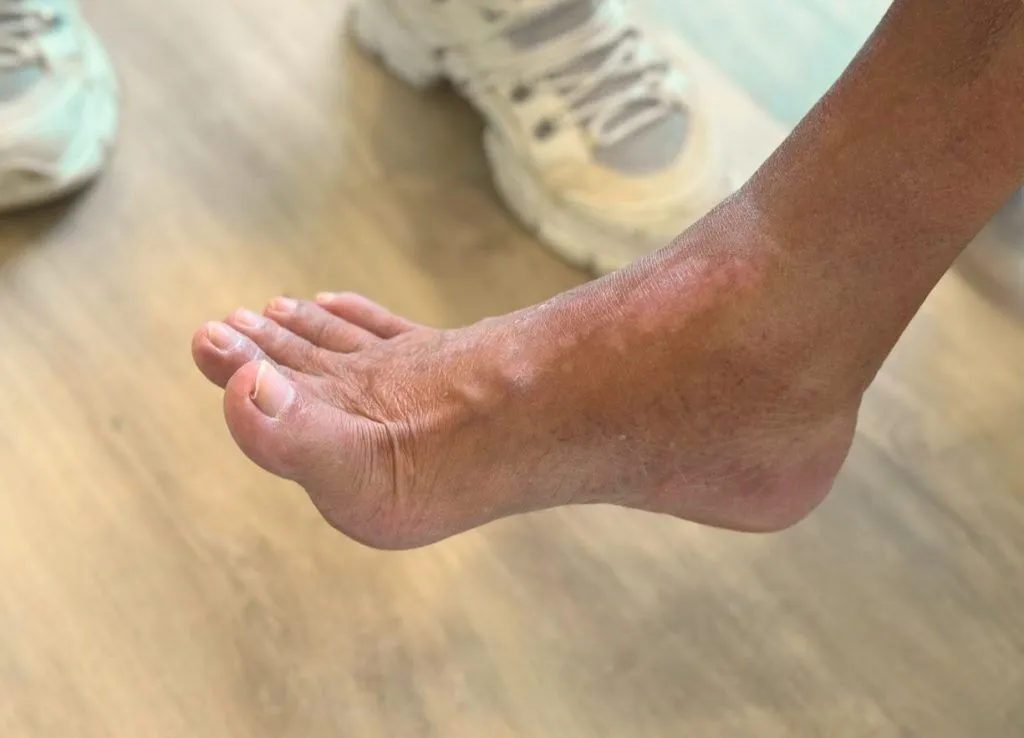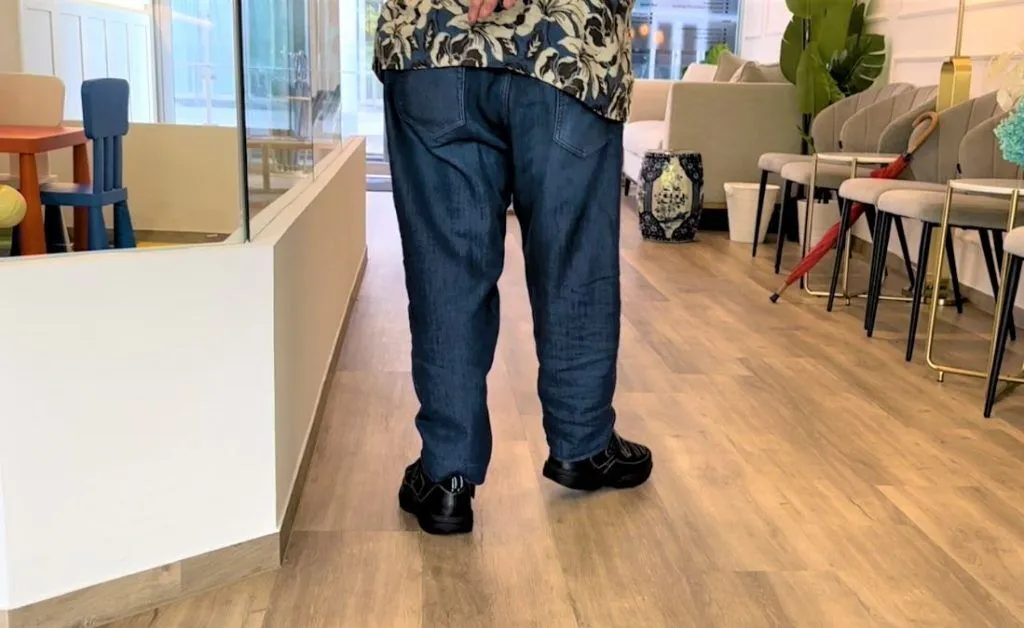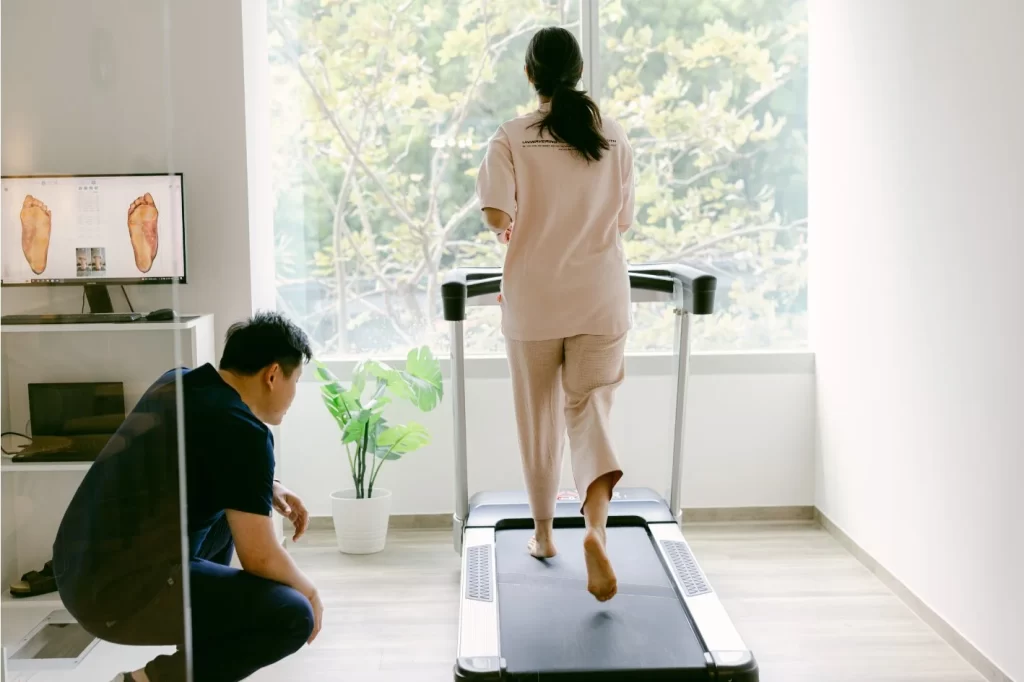What is Foot Drop?
Foot drop is a condition where the muscles in the front of the leg weaken, causing difficulty in lifting the foot and toes. It can happen due to nerve damage, injury, or underlying medical conditions. The condition can affect people of all ages and cause difficulties in walking and performing daily activities.
Lifting the foot up, an action known as ankle dorsiflexion is important for normal gait functions. Ankle dorsiflexion helps to clear the foot off the ground as our leg swings forward when we walk or run. Foot drop can cause tripping and falling, and can severely impact a person’s ability to carry out daily activities.
What Causes a Foot Drop?
Foot drop is primarily caused by injury to the motor nerves supplying our lower leg. Injury to the motor nerves can occur due to compression, trauma, infections (e.g poliomyelitis), genetic disorders (e.g Charcot-Marie-Tooth disease) or other health condition (e.g stroke).
Compression or entrapment of motor nerves occurs either from the direct pressure of nerves (e.g common fibular nerve injury), or by other body structures (e.g slipped discs). Traumatic injuries to the nerves commonly occur during surgery of the lower limb, fractures of the lower limb, or spine injury from a fall.

Need Help? See Our Podiatrist Today
What are the Signs and symptoms of Foot Drop?
Signs and symptoms include:
- Unable to lift the foot up against gravity
- Frequent tripping over the affected foot
- Dragging the foot when walking
- Needing to raise knee higher to walk
- Foot “slapping” the ground when walking
Below are the typical ways that the body compensates when walking with a foot drop:
- Increased flexion of the hip and knee
- Lifting of the hip (hip hiking) of the affected limb
- Circumduction of the affected limb (side swinging of the leg)
- Increased sidewards swaying of the body

Foot Drop Management in Singapore
A foot drop may be temporary or permanent depending on the cause. The management plan is aimed at improving gait functions and reducing body compensations so that the patient’s quality of life can be improved.
Management options for foot drop in Singapore is normally an ankle-foot orthosis (AFO), which is a type of ankle brace that helps to lift the foot up when we walk. It can be either a fixed device for complete loss of motor function or a dynamic device to help support weakened muscles. Patients with AFO normally respond very well and are able to return to most activities before their injury.
Frequently Asked Questions
Can a Podiatrist Help Foot Drop Patients?
Yes, a podiatrist can help to manage foot drop, but the treatment approach depends on the underlying cause of the condition. In cases where this condition is caused by muscle weakness or disorders, the podiatrist may combine the use of braces and physical therapy to improve muscle strength and function. If the underlying nerve damage is severe and regaining strength is difficult, orthotics or braces support will be the mainstay of management.
How Do I Know If I Have a Foot Drop?
To diagnose foot drop, your medical profession or podiatrist will perform a thorough physical examination and review the patient’s medical history. They may also recommend imaging tests, such as X-rays or MRI, to identify the underlying cause of the condition.
Is Foot Drop Curable?
Foot drop can only fully recover if the underlying nerves controlling the muscles are not permanently damaged. Once the nerve damage is repaired, with regular exercises and rehabilitation, it is possible to reverse the condition. You may seek your medical professional to advise you on the prognosis or likelihood of recovery.
Should I leave a Foot Drop untreated?
Leaving a foot drop untreated can change the way you walk. This can lead to other injuries or pain, especially in the hips or the back. If the condition is not addressed for a long period of time, it can potentially cause permanent deformities or structural changes in the joints of the lower limb. This includes deformities in the ankle, knee, or hip joints.
Are Ankle-Foot Orthoses the best solution for Foot Drop?
You will need a medical device that can help assist you in lifting up the foot when you walk if you have a foot drop. Traditionally, there are custom-made shoes made specifically for this condition. However, such shoes usually are quite bulky and function like a boot. This means that you cannot wear other commercially available shoes and can hardly participate in physical activities. An ankle-foot orthosis allows you to have a greater shoe selection, and it is easy to put on. Many patients can also start doing exercises as it can be fitted into a pair of sports shoes.
When to See a Podiatrist for Foot Drop?
If you experience symptoms such as difficulty in lifting the foot and toes or dragging the foot while walking, it is important to seek medical attention for a clear diagnosis. Your podiatrist may recommend appropriate treatment options based on the underlying cause of the condition to help support your condition. It is important to seek prompt medical attention to prevent further complications and improve your quality of life.




